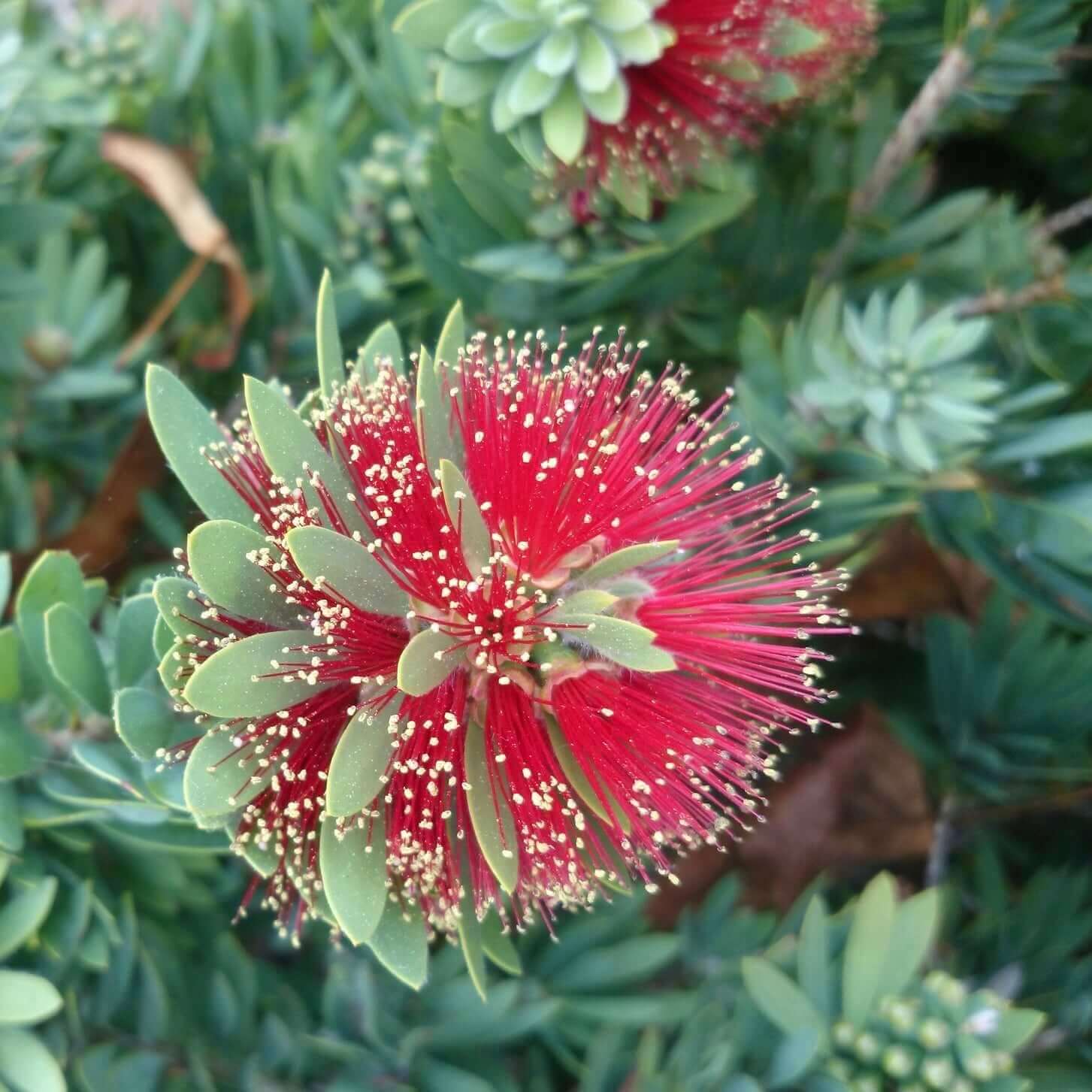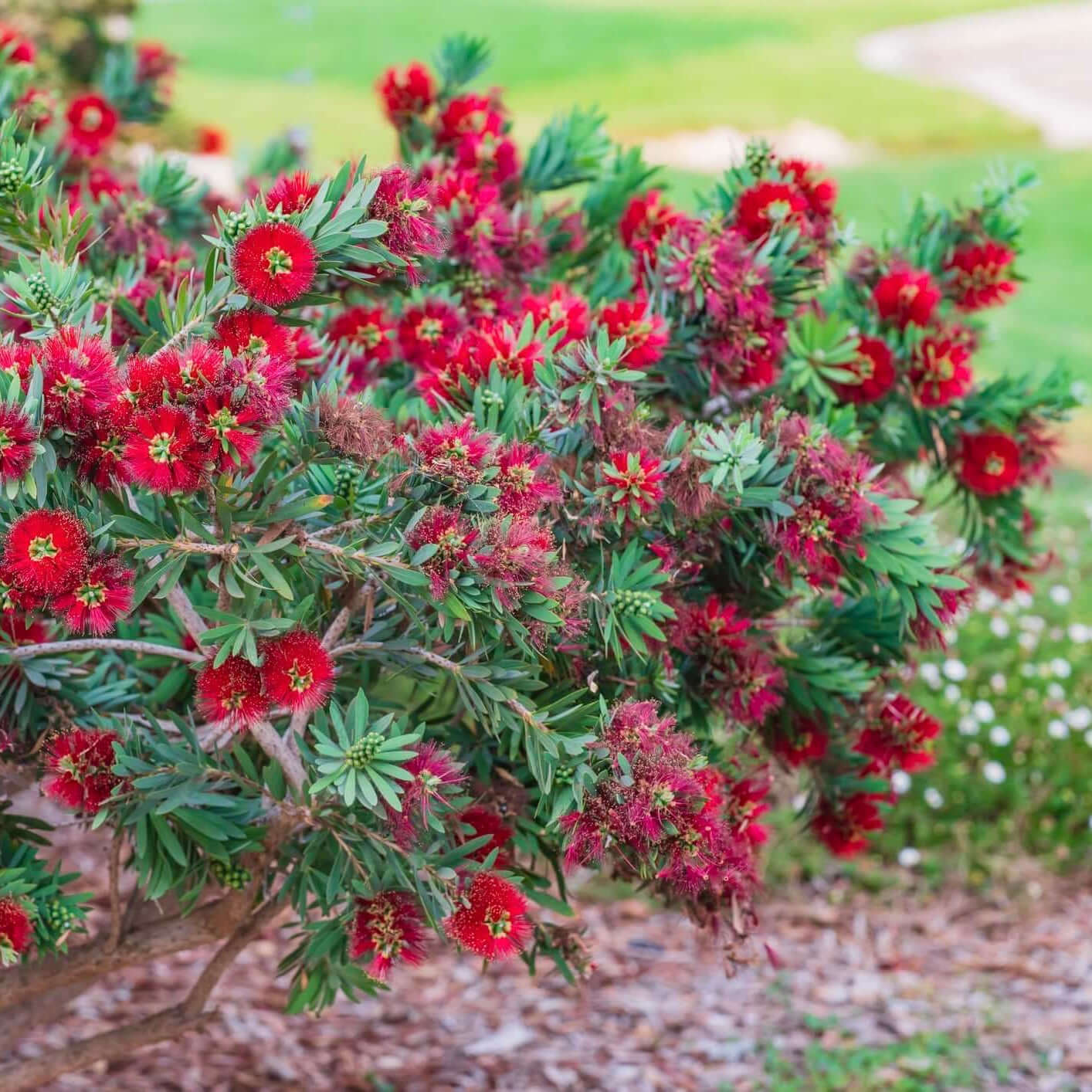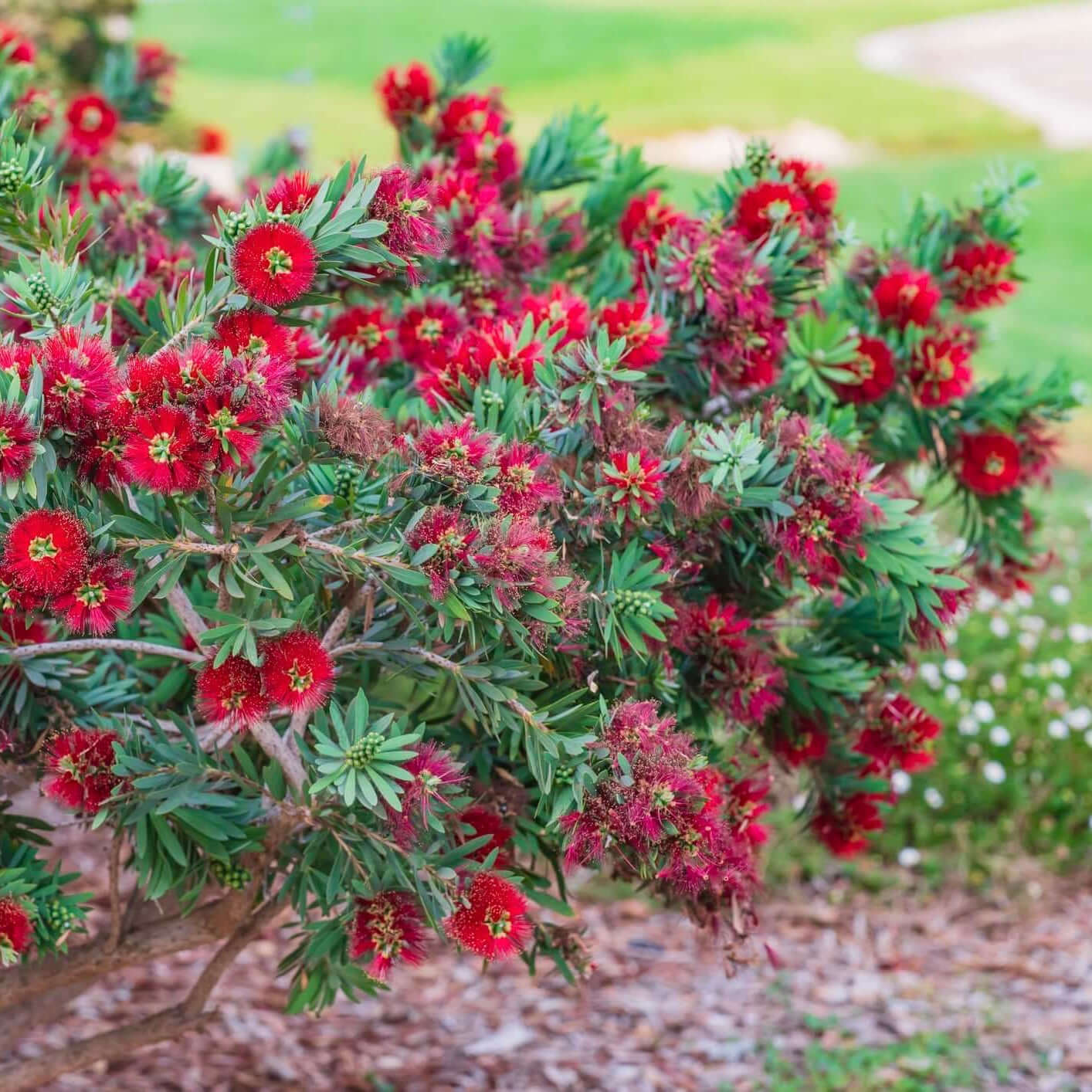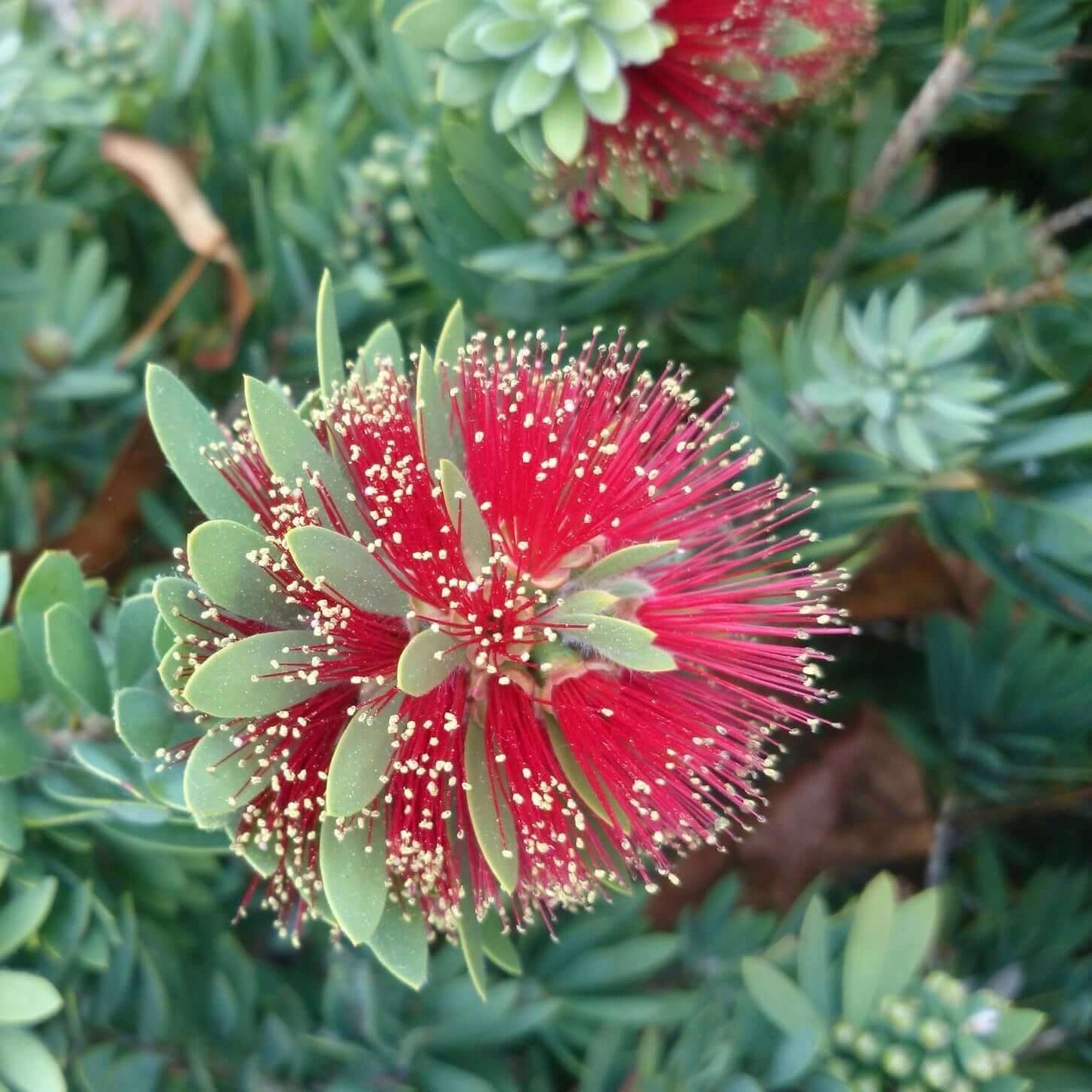Little John Dwarf Bottlebrush is a popular choice for smaller gardens, borders, and containers due to its manageable size and vibrant blooms. Here’s how to plant and care for it:
Planting Callistemon 'Little John'
Choose the Right Location:
- Sunlight: 'Little John' thrives best in full sun, needing at least 6 hours of direct sunlight each day. While it can tolerate some light shade, full sun ensures more prolific flowering.
- Space: This shrub is compact, growing up to about 3-5 feet tall and 5-8 feet wide. Choose a spot with enough room for it to reach its mature size.
Soil Preparation:
- Well-Draining Soil: Callistemon 'Little John' prefers well-draining soil and can handle a range of soil types, including sandy and loamy soils. If your soil tends to be heavy or clay-like, consider amending it with sand, gravel, or organic matter to improve drainage.
- Slightly Acidic to Neutral pH: The plant grows best in slightly acidic to neutral soil (pH 6.0-7.5). You can add organic compost to improve the soil structure and maintain the pH balance.
Planting Process:
- Dig a Generous Hole: Make a hole that is about twice as wide and the same depth as the root ball. This allows the roots to spread out easily.
- Position the Plant: Place the plant in the hole, ensuring the top of the root ball is level with the surrounding soil. Avoid planting too deeply.
- Backfill and Water Thoroughly: Fill the hole with soil, gently pressing down to remove air pockets. Water deeply after planting to help the soil settle around the roots.
Caring for Callistemon 'Little John'
Watering:
- Regular Watering Initially: Water regularly during the first year to help establish a strong root system. Once established, 'Little John' is drought-tolerant and will need less frequent watering.
- Deep Watering During Dry Spells: During prolonged dry periods, provide deep watering to keep the soil moist. Allow the soil to dry out slightly between waterings, as the plant does not like constantly wet soil.
Fertilizing:
- Annual Feeding: Fertilize in early spring with a balanced, slow-release fertilizer or a formula designed for native Australian plants, which is typically low in phosphorus. Excess phosphorus can harm Callistemon plants.
- Organic Matter: Adding compost around the base of the plant each spring can help improve soil fertility and structure.
Pruning:
- Regular Pruning for Shape: Prune lightly after flowering to maintain a neat, compact shape and to encourage new growth. Removing spent flowers can also stimulate additional blooming.
- Avoid Heavy Pruning: Avoid cutting back into old, woody stems, as the plant may not regenerate well from heavy pruning.
Mulching:
- Moisture Retention: Apply a 2-3 inch layer of mulch around the base of the plant to help retain soil moisture, regulate temperature, and reduce weed competition.
- Avoid Mulch Contact with Trunk: Keep mulch a few inches away from the base of the plant to prevent rot
Pest and Disease Management:
- Generally Pest-Free: This plant is relatively pest-resistant, but occasionally, pests such as aphids, scale insects, and spider mites can be an issue. Monitor the plant regularly, and if needed, treat infestations with insecticidal soap or neem oil.
- Prevent Diseases: Good air circulation, proper spacing, and avoiding wetting the foliage during watering can help prevent fungal diseases. If you notice any signs of mildew or rot, treat promptly by removing affected areas and applying a fungicide if necessary.









